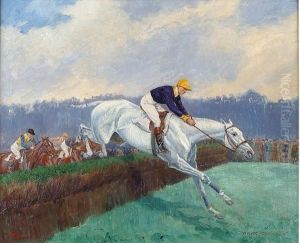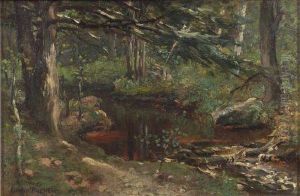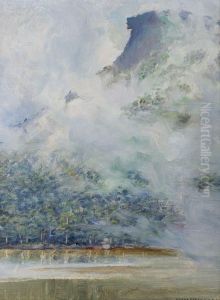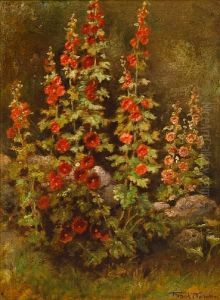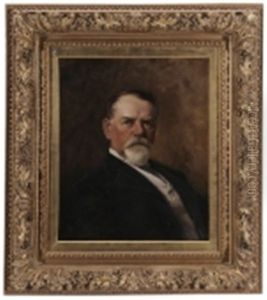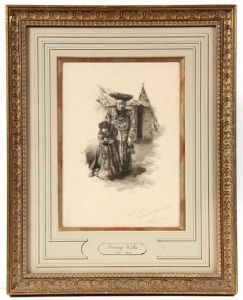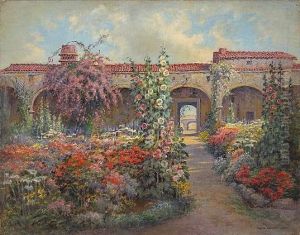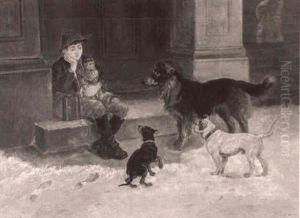Frank French Paintings
Frank French, born on July 14, 1850, in Louisville, Kentucky, was an American artist known primarily for his work as an etcher and illustrator. His full name was Francis Seymour French, but he commonly went by Frank French. His artistic inclination emerged at a young age, and he initially trained under the tutelage of George Inness, a prominent figure in American landscape painting. French further developed his skills in Europe, which was common for American artists of his era seeking to refine their techniques and engage with the rich artistic traditions of the Old World.
Upon returning to the United States, French settled in the Northeast, where he became an integral part of the etching revival of the late 19th century. This movement was marked by a renewed interest in etching as a fine art form, rather than just a method of reproduction. French's etchings often depicted pastoral and rural scenes, inspired by both American landscapes and the work of the old masters he studied in Europe. His style was characterized by a delicate touch and a masterful control of line, which allowed him to render detailed and atmospheric images.
Besides his original etchings, French was also known for his work as an illustrator. He provided illustrations for a variety of publications, including some of the era's leading books and magazines. His illustrations were marked by the same attention to detail and fine line work that could be seen in his etchings.
French was a member of several important artistic societies, including the New York Etching Club and the Society of American Artists. He was also a founding member of the American Fine Arts Society. His contributions to the field of etching were significant, and he was respected by his peers for his technical skill and artistic vision.
Frank French passed away on December 11, 1933. Throughout his life, he left a lasting impact on the world of American art, particularly in the field of etching. His work continues to be appreciated for its beauty and craftsmanship, and he is remembered as part of the lineage of artists who contributed to the American etching renaissance of the late 19th and early 20th centuries.
